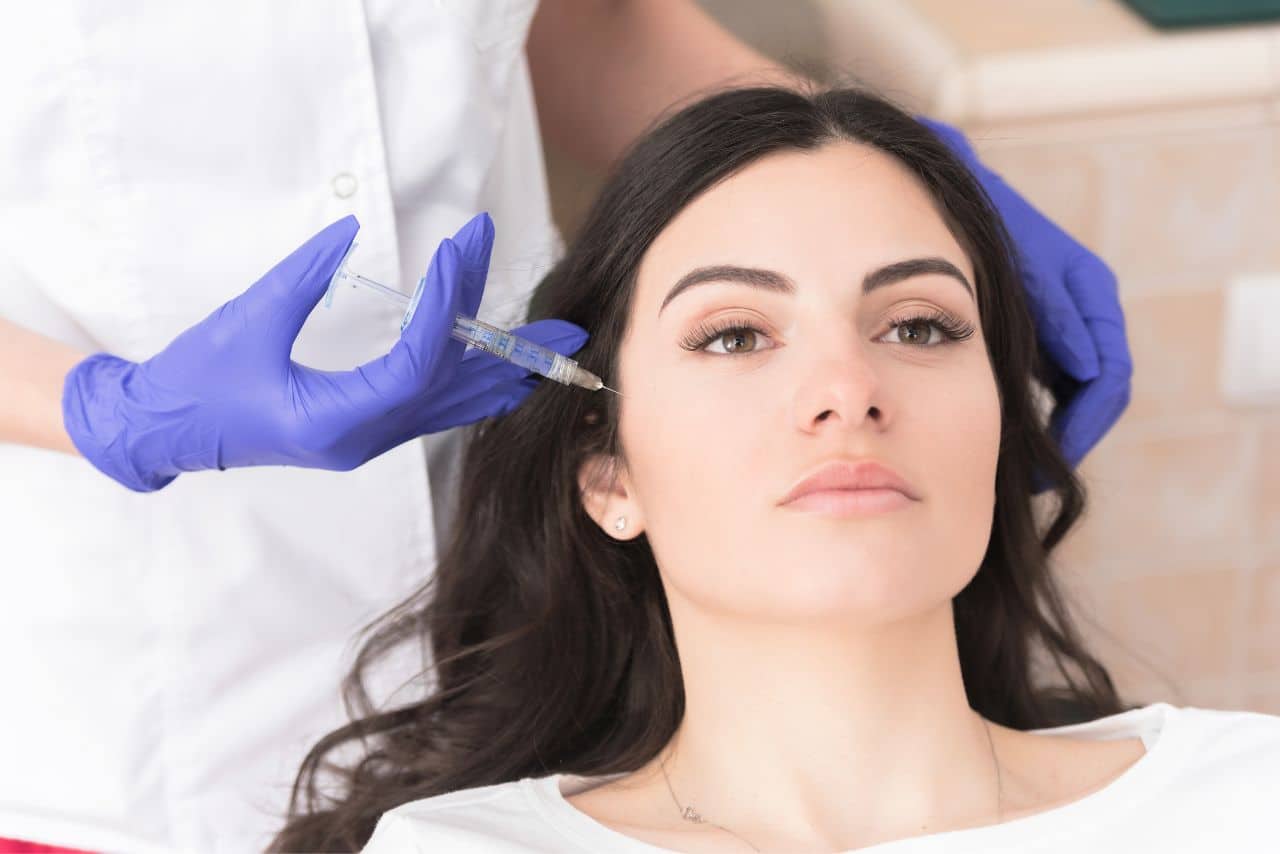
How does aging affect the cheeks?
The process of aging affects the body, and particularly the skin, in many ways. While many people might associate aging in the skin with lines, wrinkles, and folds, a huge contributor to an aged appearance is actually volume loss, which affects the mid-face and cheeks in particular. This typically starts occurring in the mid-twenties, when the subcutaneous fat starts to redistribute in areas such as the cheeks, temples, forehead, and areas around the eyes and mouth. This occurs as the body produces less collagen and hyaluronic acid, causing the underlying support system to deteriorate and the fat pads to move downward. This makes the cheeks look flat, hollow, or sunken. While aging is a huge contributor to this process, other factors such as genetics, lifestyle, certain medications, weight loss, or illness, may all cause facial volume loss.
How to treat cheeks
As the issues that cause volume loss are not superficial but more underlying, it is impossible to prevent and solutions that may help with other signs of aging—such as lotions and a strict sun-care regimen—will not be effective treatments. Some doctors treat sunken and hollow cheeks with a fat transfer surgery, where fat is taken from another area of the patient’s body, usually the belly, buttocks, or hips, and is implanted into the face. However, a much more popular procedure is dermal filler injections. For facial volumization, hyaluronic acid, poly-L-lactic acid, and calcium hydroxylapatite are the materials of choice. These components are popular due to their plumping abilities as well as their lasting, natural-looking results.
Can Juvederm help?
Juvederm, a hyaluronic acid-based dermal filler, is a great option to add volume to the cheeks for a plumper, more youthful appearance. By injecting the hyaluronic acid gel deep into the cheek area, patients will notice an instant lift and increase in volume, which helps contour the face for a more radiant appearance. In 1 clinical study, patients reported that they felt up to 5 years younger after being treated with Juvederm Voluma, and many plastic surgeons and dermatologists choose Juvederm for its natural-looking results. The results from Juvederm injections can last for up to 2 years, depending on the patient’s age and lifestyle, the injection technique used, and the severity of the issue.
Risks
Juvederm is an effective and safe cosmetic medical procedure that is used worldwide. However, there are some risks and side effects that are associated with treatment. As with all injection-based procedures, there is a risk of infection, while there may also be some mild temporary side effects. Patients may experience, redness, swelling, pain, tenderness, firmness, bruising, discoloration, itching, and lumps at the injection site. Rare complications may occur if the gel is injected into a blood vessel, including permanent scarring, blindness, or stroke. Complications are rare and usually only occur when an unlicensed or inexperienced practitioner is administering the injections. It is also important to discuss the patient’s medical history prior to treatment to ensure the safest result.

About the Author: Doris Dickson is a specialist writer for Health Supplies Plus, focusing on the aesthetic medicine industry. She diligently researches cosmetic treatments and products to provide clear, concise information relevant to licensed medical professionals. Her work supports Health Supplies Plus’s commitment to being a reliable informational resource and trusted supplier for the aesthetic community.
Disclaimer: The content provided in this article is intended for informational purposes only and is directed towards licensed medical professionals. It is not intended to be a substitute for professional medical advice, diagnosis, or treatment, nor does it constitute an endorsement of any specific product or technique. Practitioners must rely on their own professional judgment, clinical experience, and knowledge of patient needs, and should always consult the full product prescribing information and relevant clinical guidelines before use. Health Supplies Plus does not provide medical advice.
